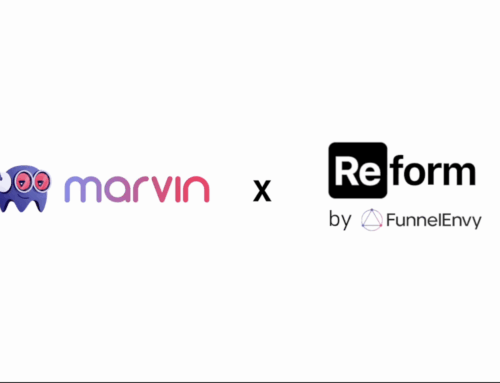If your marketing campaigns were a military, lead forms would be the infantry. They are on the ground in the fight for more leads and conversions. Lead forms are the “tip of the spear” for a conversion campaign. If your forms aren’t in good shape, you’ll struggle to meet your marketing goals, putting a damper on revenue and constricting company growth.
Some optimization steps are relatively easy to implement if you want to get your forms in better shape. Starting with this low-hanging fruit is a great way to refresh a campaign that was once successful but has stopped performing to its previous level or as a foundation for reviewing a new campaign before it’s finalized for launch.
Here are four easy strategies to improve your lead forms to increase conversions:
Minimize Friction
When you think about friction, you might imagine tires on a rough road or a marble sliding down a chute. In physics, friction is the resistance a surface encounters when moving over another surface. In a lead form, “friction” is anything that stops a user from filling out your form.
How do you minimize friction? Here are a few suggestions from HubSpot, with additional insights about each point:
- Remove extra navigation on the page with your form. Having a standard navigation menu makes it too easy for someone to get distracted while they are trying to fill out your lead form. Even if they don’t, why give them the temptation? Most conversion forms have either no navigation menu options or a single link or button that takes users back to the home page or previous form.
- Use precise language in your form. It’s a shame to put in all the work required to attract a lead to your website, only for that person to leave your page without converting because you used confusing language that they don’t understand. Make sure all parts of your writing are clear and concise, from the body copy on your website to the form fields themselves. When in doubt, it’s always best to use fewer short words than a longer, more complicated one. You can use an online tool like Hemingway to grade your page’s written content and ensure it’s understandable for the people visiting the site.
- Make forms shorter whenever possible. There shouldn’t be a single unnecessary field that prospects need to fill out to complete your form, especially if they complete it to download a resource or schedule an appointment with someone on your team.
There are many other great resources for conversion rate optimization online – check out sites like Shopify and CrazyEgg for more details about optimizing your forms and other conversion elements.
Use Multi-Step Forms
“Wait,” you might be thinking, “I thought I was supposed to keep my forms as short as possible! Doesn’t using multiple steps in a form contradict this idea?” It may seem that way at first glance. However, if you spend enough time marketing online, you’ll understand that some forms must be completed fully – there’s no way of getting around it. A common example in the ecommerce world is a customer information form that includes payment and shipping information. Another example might be setting an appointment to meet with someone on your team. You wouldn’t want the location or timing of the appointment lost because of an error or oversight on your form.
If you spend enough time marketing online, you’ll understand that some forms must be completed fully Share on XIf you must present page visitors with a lengthy form, the best thing to do is break it up into multiple parts so that it doesn’t feel like a massive trudge to get through. Continuing with the example of an ecommerce transaction, you’ll typically see these form pages broken up by the various phases of the transaction: purchase info, shipping info, customer name, address, etc. This split makes it much more bearable to get through instead of having all of these forms presented simultaneously.
Include Social Proof
As you know, people are social animals. We are conditioned to do things others do so we remain members of our tribe. Millions of years ago, expulsion from your tribe due to non-conforming beliefs or actions meant you had to try to survive on your own in the wilderness. Though most of us no longer live in tribes, people still have a natural tendency to trust and value the actions of others.
That’s why social proof is so valuable in modern marketing. Buyers in the B2B space tend to be less swayed by social proof than consumers, but even the most rational, logic-driven purchasers can still be persuaded to purchase if they know others have done the same. It’s particularly beneficial to get testimonials or social proof from people who are respected figures in a field. Placing social proof on your forms is a great technique for quelling those last-minute uncertainties about finishing.
Consider Form Alternatives
At FunnelEnvy, we appreciate the classic elements of marketing that have worked consistently over the years. But we’re also big believers in looking forward and embracing cutting-edge technology. We suggest considering whether or not you even need to have a form to generate conversions at a sufficient rate. There are a few different options for replacing a form, but the most popular one comes to us thanks to AI and predictive language technology: chatbots.
Chatbots have grown increasingly common over the last decade – you’ve probably seen or interacted with one recently. The premise is that instead of filling out a standardized form, users can get customized assistance for their specific questions or challenges. Although this option isn’t feasible for everyone, some companies might even supplement an automated chatbot with a live customer service agent. But with interactivity and personalization looking like critical pillars of the next generation of marketing, it’s worth considering an automated chat program to replace a form.
According to Forrester, over 40% of American adults believe it’s important for retail companies to offer live chat. And while that statistic may be mostly regarding B2C purchases, the way someone likes to make a purchase in their personal life probably translates to how they prefer to make purchases professionally.
Besides a chatbot, other options for replacing a form might include an interactive calendar or another widget that allows a user to schedule an appointment or call. In many cases, these options are simply a more advanced version of a form – but they’re still worth considering to improve your conversion rate.
Final Thoughts on Form Optimization
You don’t always have to reinvent the wheel to improve your marketing performance. By making the simple adjustments above, you can get more page visitors to fill out your forms and move to the next stage of your funnel, which ultimately drives revenue and growth for the entire business.
If you’d like some input on optimizing your lead forms or any other part of your conversion funnel, fill out this quick questionnaire to learn more about how we might be able to help.





